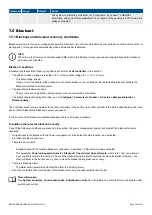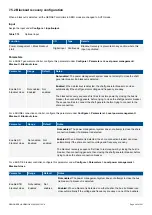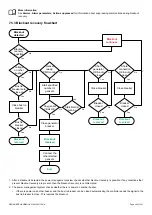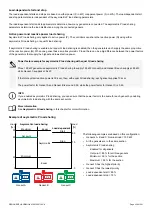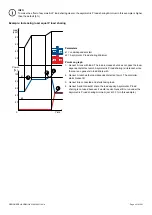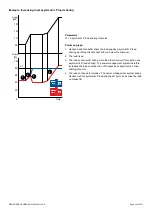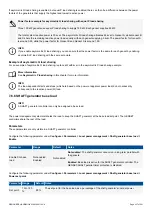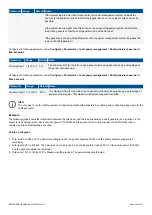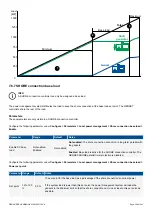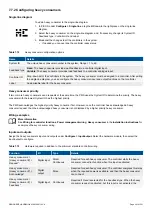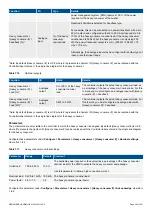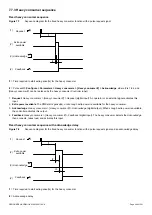
Parameter Range
Default
Notes
analogue input and uses the
Set point
parameter as the set point for
asymmetric Q load sharing.
Set point
1 to 100 % of
nominal reactive
power
80 %
The asymmetric Q load sharing set point for the genset. Whenever possible, the
power management system adjusts the load of lower priority gensets, and gensets
without asymmetric Q load sharing enabled, so that the gensets with asymmetric
Q load sharing enabled can run at their set point.
Configure the following parameters under
Configure > Parameters > Power management rules > Configuration # > Asymmetric
load sharing > Q configuration
.
These parameters apply to all the GENSET controllers in the section.
Parameter
Range
Default Notes
Minimum
1 to 100 % of nominal
reactive power
5 %
If the load percentage for any genset is less than this minimum, the power
management system stops asymmetric Q load sharing. Equal Q load sharing is
used instead. This minimum reduces frequency control problems for gensets
running at a low percentage of their nominal load. This minimum also reduces
the risk of reverse power.
Minimum delay 0 s to 1 h
0.5 s
To stop asymmetric Q load sharing, the load percentage must be less than the
minimum for this period.
Maximum
1 to 100 % of nominal
reactive power
95 %
If the load percentage for any genset is more than this maximum, the power
management system stops asymmetric Q load sharing. Equal Q load sharing is
used instead. This maximum reduces the risk of genset overloading.
Maximum
delay
0 s to 1 h
0.5 s
To stop asymmetric Q load sharing, the load percentage must be more than the
maximum for this period.
How it works
When asymmetric Q load sharing is enabled for gensets, then, whenever possible, these gensets run at their asymmetric Q load
sharing set points constantly. If it is not possible for all the gensets with asymmetric Q load sharing enabled to run at their set points,
then only the highest priority genset(s) run at their set points constantly. The lowest priority connected genset(s) supply the
remaining, fluctuating load.
Asymmetric Q load sharing is only possible when the remaining load on the low priority genset is between the minimum and
maximum load percentage. If this is not possible, equal Q load sharing is used for all the gensets.
Load-dependent start and stop
The load-dependent starts and stops are based on either power (P, in kW) or apparent power (S, in kVA). The load-dependent start
and stop parameters are independent of the asymmetric Q load sharing parameters.
The load-dependent start and stop parameters determine how many gensets are connected. The asymmetric Q load sharing
parameters determine the reactive power load distribution among the connected gensets.
Nominal reactive power
The asymmetric Q load sharing is based on the nominal reactive power. The nominal reactive power is calculated from the nominal
apparent power, the nominal power and/or the nominal power factor.
More information
See
AC configuration and nominal settings
,
Nominal settings
,
Nominal power calculations
for more information.
Active power and reactive power load sharing
Asymmetric Q load sharing only applies to reactive power (Q). The controllers can share the active power (P) using either
asymmetric P load sharing, or equal P load sharing.
DESIGNER'S HANDBOOK 4189340911K UK
Page 256 of 521

